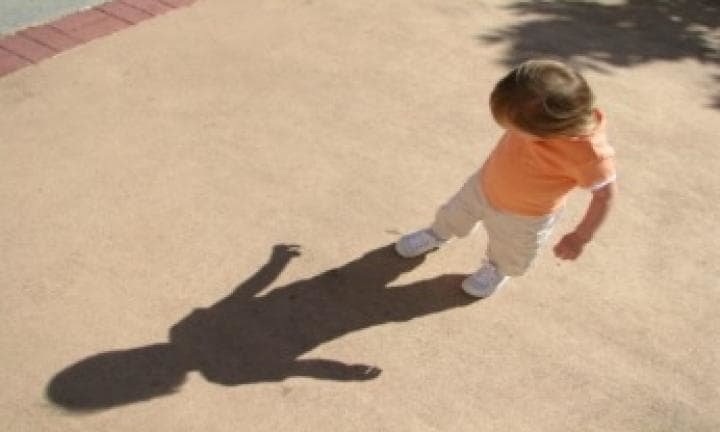Our daughters are aged around 4 and 6, give or take a few months: take from the 6-year-old and give to the 4-year-old is how we do it (for age and for most other transactions at home). But I know particular parents who, when questioned about their children’s age, will make it a point to be exact. “My kid is now 2.8 and the other one is 4.3,” one of my friends said when I enquired about the well-being of the family in this pandemic (slowly turning out to be a “paindemic”). I wasn’t sure if he was referring to their heights or ages, but I let it go.
During these past two months, we have exhausted all possible activities one can do with our daughters. We’ve been through (prefix all activities with the word ‘attempted’) cooking, cleaning, art, craft, yoga, exercising, dollhouses, storytelling, cartoons, movies, webinars, online school, music, songs, and dance. We diligently do prayers as well but the mention of “Chinese” in kem na mazda thoroughly confuses them; given its connection to the virus. We go up to the terrace and (don’t forget the prefix here too) cycle, skate, play football, catch and cook, hide and seek, lock and key, and saakli. Sometimes, it’s social distancing, while at others, it’s distant socializing.
Occasionally, I feel, you simply have to allow children to do nothing, let them get bored. It boosts creative thinking, some neuroscientists say. One night, my elder daughter switched bedrooms in the middle of deep sleep. No, she wasn’t sleep walking. She woke up fully aware, walked into the next room, and slept there. The next morning, I asked her if she remembered what she did, and she nodded assertively. “I got bored while sleeping,” she said gleefully. That’s the kind o f healthy boredom we want in our kids today, I said to myself.
f healthy boredom we want in our kids today, I said to myself.
“We need to get some sun,” is my pandemic tagline, which paved the way for other kinds of adventure. We decided to take a walk in the confines of our compound in the blazing heat. We walked around with a magnifying glass chasing little insects into their holes, deconstructing seeds, collecting pigeon eyes, different coloured feathers, and dried-up fallen leaves and flowers, inspecting their patterns and admiring their hues. We put tiny sticks in their path as we patiently watched these creatures bypass the engaging obstacles we had created for them; it was our duty to make life exciting for these little ones as well. We made several rounds, discovering something new each time and boosting our vitamin D levels in the bargain. Children when left alone to explore are imbued with a sense of discovery, a fascination for finding the oddities in the simplistic magnificence of nature.
“Why our shadow never leaves us, Dada?” my little one asked, after about eight rounds of her being chased by our own images in varying sizes and shapes depending on their relationship with the sunrays. Little did I realize that while we were collecting paraphernalia in the garden, the random jumping, standing on one leg, subtle skipping, sharp sprinting and sudden stops had gently and playfully heightened her awareness to find an answer to the question, before she reached a point where it had to be asked.
I was certain she wasn’t interested in a straightforward scientific fact that a shadow is formed when an object comes in the way of light. She wanted to know why it never left us, not how it was formed.
“Our shadows are here to remind us about who we are. They point out that we were small once and how we came to be so big, but if we tread in the wrong direction or dodge the light, we could easily be small once again. It allows us to reach for the stars but at the same time keeps us grounded.” We outstretched our arms to see them travel into the next compound. She tried to run and catch the shadow of my arms in hers.
I got more philosophical. “It’s our third eye looking back at us, observing how we interact with others. It’s an extension of us in the space around us. It’s watching every action of ours. It prompts us to do the right thing. It teaches us to look at ourselves even when no one is looking at us,” I pointed. “Can you see your big ears looking back at you?” she asked laughingly as she tried to stamp on their shadow to prevent them from taking up so much space.
“Shadows reassure us that we can share the same space. We may bump into each other, come in each other’s way, nudge and push, but we can still be together. Your shadow is so different from mine and even though we are not holding hands right now, our shadows look like they are,” I demonstrated as we placed our hands upon each other 6 inches apart. “Sometimes, we create physical distances for no reason, even when all our shadows want is for us to be together. That’s why our shadows never leave us,” I concluded.
“If our shadow never leaves us, then why don’t we see our shadows at night?” came the googly. “That’s because night itself is a shadow. When night falls, you’re standing within the shadow of the earth. This allows us to reflect on the day that has passed and get ready to face our shadows the next day,” I said, pausing to contemplate the deeper answers behind such seemingly simple questions.
I was jolted out of my reverie with “Enough, enough, Dada, you’re talking too much… come on, let’s play!” And we continued ambling around.





0 thoughts on “Why our shadows never leave us”
Shadows are too lonely, need illumination to be live –good read